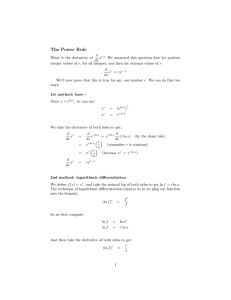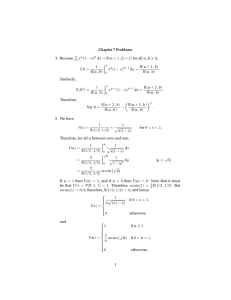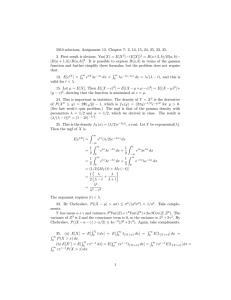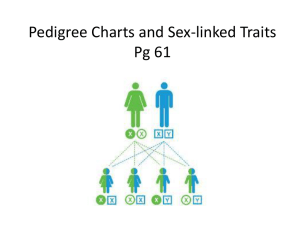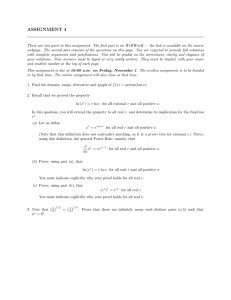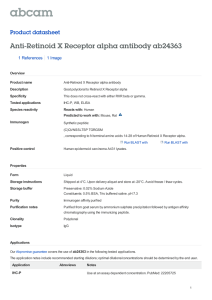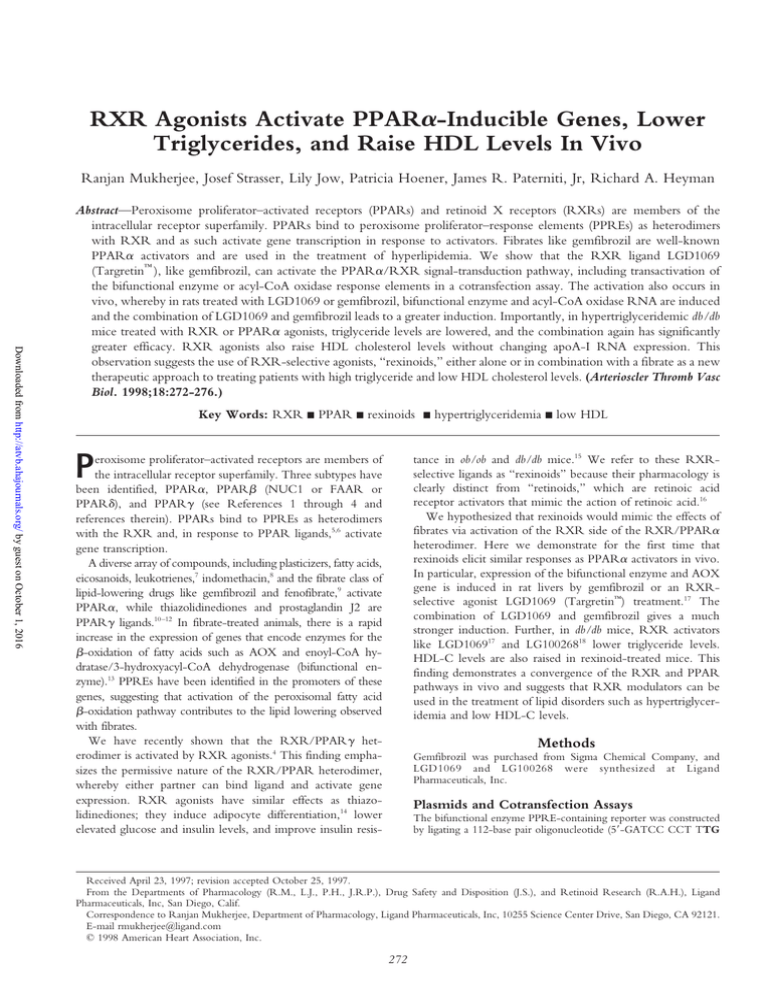
RXR Agonists Activate PPARa-Inducible Genes, Lower
Triglycerides, and Raise HDL Levels In Vivo
Ranjan Mukherjee, Josef Strasser, Lily Jow, Patricia Hoener, James R. Paterniti, Jr, Richard A. Heyman
Downloaded from http://atvb.ahajournals.org/ by guest on October 1, 2016
Abstract—Peroxisome proliferator–activated receptors (PPARs) and retinoid X receptors (RXRs) are members of the
intracellular receptor superfamily. PPARs bind to peroxisome proliferator–response elements (PPREs) as heterodimers
with RXR and as such activate gene transcription in response to activators. Fibrates like gemfibrozil are well-known
PPARa activators and are used in the treatment of hyperlipidemia. We show that the RXR ligand LGD1069
(Targretin™ ), like gemfibrozil, can activate the PPARa/RXR signal-transduction pathway, including transactivation of
the bifunctional enzyme or acyl-CoA oxidase response elements in a cotransfection assay. The activation also occurs in
vivo, whereby in rats treated with LGD1069 or gemfibrozil, bifunctional enzyme and acyl-CoA oxidase RNA are induced
and the combination of LGD1069 and gemfibrozil leads to a greater induction. Importantly, in hypertriglyceridemic db/db
mice treated with RXR or PPARa agonists, triglyceride levels are lowered, and the combination again has significantly
greater efficacy. RXR agonists also raise HDL cholesterol levels without changing apoA-I RNA expression. This
observation suggests the use of RXR-selective agonists, “rexinoids,” either alone or in combination with a fibrate as a new
therapeutic approach to treating patients with high triglyceride and low HDL cholesterol levels. (Arterioscler Thromb Vasc
Biol. 1998;18:272-276.)
Key Words: RXR n PPAR n rexinoids n hypertriglyceridemia n low HDL
P
tance in ob/ob and db/db mice.15 We refer to these RXRselective ligands as “rexinoids” because their pharmacology is
clearly distinct from “retinoids,” which are retinoic acid
receptor activators that mimic the action of retinoic acid.16
We hypothesized that rexinoids would mimic the effects of
fibrates via activation of the RXR side of the RXR/PPARa
heterodimer. Here we demonstrate for the first time that
rexinoids elicit similar responses as PPARa activators in vivo.
In particular, expression of the bifunctional enzyme and AOX
gene is induced in rat livers by gemfibrozil or an RXRselective agonist LGD1069 (Targretin™) treatment.17 The
combination of LGD1069 and gemfibrozil gives a much
stronger induction. Further, in db/db mice, RXR activators
like LGD106917 and LG10026818 lower triglyceride levels.
HDL-C levels are also raised in rexinoid-treated mice. This
finding demonstrates a convergence of the RXR and PPAR
pathways in vivo and suggests that RXR modulators can be
used in the treatment of lipid disorders such as hypertriglyceridemia and low HDL-C levels.
eroxisome proliferator–activated receptors are members of
the intracellular receptor superfamily. Three subtypes have
been identified, PPARa, PPARb (NUC1 or FAAR or
PPARd), and PPARg (see References 1 through 4 and
references therein). PPARs bind to PPREs as heterodimers
with the RXR and, in response to PPAR ligands,5,6 activate
gene transcription.
A diverse array of compounds, including plasticizers, fatty acids,
eicosanoids, leukotrienes,7 indomethacin,8 and the fibrate class of
lipid-lowering drugs like gemfibrozil and fenofibrate,9 activate
PPARa, while thiazolidinediones and prostaglandin J2 are
PPARg ligands.10–12 In fibrate-treated animals, there is a rapid
increase in the expression of genes that encode enzymes for the
b-oxidation of fatty acids such as AOX and enoyl-CoA hydratase/3-hydroxyacyl-CoA dehydrogenase (bifunctional enzyme).13 PPREs have been identified in the promoters of these
genes, suggesting that activation of the peroxisomal fatty acid
b-oxidation pathway contributes to the lipid lowering observed
with fibrates.
We have recently shown that the RXR/PPARg heterodimer is activated by RXR agonists.4 This finding emphasizes the permissive nature of the RXR/PPAR heterodimer,
whereby either partner can bind ligand and activate gene
expression. RXR agonists have similar effects as thiazolidinediones; they induce adipocyte differentiation,14 lower
elevated glucose and insulin levels, and improve insulin resis-
Methods
Gemfibrozil was purchased from Sigma Chemical Company, and
LGD1069 and LG100268 were synthesized at Ligand
Pharmaceuticals, Inc.
Plasmids and Cotransfection Assays
The bifunctional enzyme PPRE-containing reporter was constructed
by ligating a 112-base pair oligonucleotide (59-GATCC CCT TTG
Received April 23, 1997; revision accepted October 25, 1997.
From the Departments of Pharmacology (R.M., L.J., P.H., J.R.P.), Drug Safety and Disposition (J.S.), and Retinoid Research (R.A.H.), Ligand
Pharmaceuticals, Inc, San Diego, Calif.
Correspondence to Ranjan Mukherjee, Department of Pharmacology, Ligand Pharmaceuticals, Inc, 10255 Science Center Drive, San Diego, CA 92121.
E-mail rmukherjee@ligand.com
© 1998 American Heart Association, Inc.
272
Mukherjee et al
AOX
HDL-C
PPAR
PPRE
RXR
273
Selected Abbreviations and Acronyms
5 acyl-CoA oxidase
5 HDL cholesterol
5 peroxisome proliferator–activated receptor
5 peroxisome proliferator–response element
5 retinoid X receptor
ACC TAT TGA ACT ATT ACC TAC ATT AGATCC CCT
TTG ACC TAT TGA ACT ATT ACC TAC ATT AGATCC
CCT TTG ACC TAT TGA ACT ATT ACC TAC ATT
AGATC-39) containing three copies (in bold) of the bifunctional
enzyme PPRE19 into the BamHI site of pBL-tk-Luc.20,21
Cotransfection assays were performed as previously described.22
Control cells received an equivalent amount of vehicle. Transfections
were done in triplicate. Each point represents the mean6SD. The
experiments were repeated at least twice. A representative experiment
is shown.
Downloaded from http://atvb.ahajournals.org/ by guest on October 1, 2016
In Vivo Studies
Male Sprague-Dawley rats (225 to 250 g) were obtained from Harlan
Sprague Dawley (San Diego, Calif). Animals (four per treatment
group) were fed standard laboratory diets. Animals were treated with
compounds via gavage (5 mL z kg21 z d21) for 7 consecutive days. The
vehicle contained Tween 80, PEG 400, and carboxymethylcellulose
(0.05:9.95:0.9). Liver RNA was isolated by RNAzol technique
(Tel-Test Inc). The rat bifunctional enzyme cDNA and human
GAPDH cDNA (Ambion) were labeled with [32P]dATP by random
priming. AOX cDNA (177 base pairs) was inserted into the Pst I and
HindIII sites of pGEM-4 vector (Promega). Antisense AOX riboprobe
was made by T7 RNA polymerase. Northern blot analysis was
performed by standard techniques.
For protein extracts, livers were homogenized in 10% sucrose,
3 mmol/L imidazole (pH 7.4), and clarified by centrifugation. Protein
extract (100 mg per lane) was resolved by 10% denaturing polyacrylamide gel electrophoresis and transferred to Immobilon-P transfer
membrane (Amersham). The membrane was incubated with 5%
powdered milk in PBS for 30 minutes at room temperature. After
washing with PBST (PBS with 0.075% Tween 20), the membrane
was incubated with a polyclonal anti– bifunctional enzyme antibody in
PBST. The membrane was again washed with PBST, incubated with
125
I-labeled protein A, and the antigen-antibody complex visualized by
autoradiography. The band intensities on the Northern and Western
blots were quantified by a Phosphorimager (Molecular Dynamics).
Female C57BLKs/J-m1/1db mice (7 weeks old at commencement of study, nine animals per treatment group) were dosed with
vehicle or gemfibrozil, LG100268, or the combination of gemfibrozil
and LG100268, as indicated in the figure legends, once daily by gavage
(0.6 mL/42 g) for 14 days. In a separate study, animals were dosed
with vehicle (eight animals) or LGD1069 (seven animals) for 14 days.
On the days indicated, animals were fasted for 3 hours and a sample of
blood was drawn. The GPO-Trinder kit (Sigma) was used to measure
plasma triglycerides. On day 15, the animals were sacrificed and
plasma HDL-C levels measured by the phosphotungstic acid magnesium ion precipitation technique (Boehringer Mannheim).
Total liver RNA was prepared and analyzed by Northern blotting,
with a 32P-labeled probe specific to apoA-I. The blot was then stripped
and rehybridized to a probe specific to GAPDH. The bands were
quantified by a Phosphorimager (Molecular Dynamics). The intensity
of the apoA-I signal in each lane was normalized to the intensity of the
GAPDH signal of the same lane and the mean of each group
calculated.
Results and Discussion
To study the effect of rexinoids and fibrates on the RXR/
PPARa heterodimer, we used the cotransfection assay with
PPARa and RXR expression vectors and a reporter containing three copies of the PPRE identified in the AOX gene5 or
Figure 1. Activation of the acyl-CoA oxidase and bifunctional
enzyme (BE) PPRE by RXR and PPARa agonists. CV-1 cells
were transfected with pCMVhPPARa (ref 6) and pRShRXRa (ref
23) and a reporter containing three copies of the AOX PPRE (ref
5) (A and C) or three copies of the PPRE identified in the bifunctional enzyme gene (B and D). PPARa and RXRa were used in A
and B, while PPARa and RXRa(L451A) (ref 24) were used in C
and D. Gemfibrozil and LGD1069 were added, to a final concentration of 100 mmol/L and 1 mmol/L, respectively.
the bifunctional enzyme gene. The transcriptional response
increases 4-fold with gemfibrozil and 13-fold with LGD1069,
an RXR-selective agonist (Kd 21–36 nM for RXRs17) on the
AOX PPRE (Fig 1A). For the bifunctional enzyme PPRE, the
transcription response was increased by 3-fold and 5-fold with
gemfibrozil and LGD1069, respectively (Fig 1B). This result is
consistent with our earlier data showing activation of RXR/
PPARa with 9-cis retinoic acid (a retinoic acid receptor and
RXR agonist5,6). However, the greatest response (49-fold with
the AOX PPRE and 12-fold with the bifunctional enzyme
PPRE) was observed in the presence of both gemfibrozil and
LGD1069. This finding shows that a greatly enhanced transcriptional response occurs when both partners of the RXR/
PPARa heterodimer are activated by their respective agonists.
We hypothesized that the activation of the AOX and
bifunctional enzyme PPREs and the synergistic activation by
PPARa and RXR ligands occur through activation of the
RXR/PPARa heterodimer. If this is the case, a nonfunctional
RXR is expected to blunt the transcriptional response. We
used such a mutant of RXRa, RXR(L451A) (Reference 31
and Schulman et al, unpublished data, 1997). In this mutant
RXRa, the amino acid at position 451 is changed to alanine.
This region has been identified to be important for ligandinduced transcriptional activation by the receptor (the AF-2
domain) and is situated at the extreme carboxy- terminus of
the receptor. RXR(L451A) binds RXR ligands with normal
affinity but cannot activate transcription in response to ligands.24 We show that when RXR(L451A) is partnered with
PPARa, transcriptional activation in reponse to gemfibrozil or
LGD1069 drops significantly (Fig 1C and 1D). In particular,
activation with gemfibrozil and LGD1069 drops by 88% and
97% on the AOX and bifunctional enzyme PPREs, respec-
274
RXR Ligands Lower Triglycerides and Raise HDL
Downloaded from http://atvb.ahajournals.org/ by guest on October 1, 2016
Figure 2. Induction of the bifunctional enzyme and AOX gene in
rats treated with gemfibrozil and LGD1069. Rats were treated
with vehicle (control), gemfibrozil (100 mg z kg21 z d21), LGD1069
(30 mg z kg21 z d21), or gemfibrozil plus LGD1069 (100 mg z
kg21 z d21 and 30 mg z kg21 z d21, respectively) by gavage for 7
days. A, Northern blot analysis was performed with 10 mg of
total liver RNA per lane and a bifunctional enzyme (BE), AOX, or
GAPDH probe. B, Western blot analysis was performed with
100 mg of protein extract from livers of treated animals and a
polyclonal antibody to the rat bifunctional enzyme. The position
of the expected band (78 kD) is denoted by an arrow.
tively (Fig 1; compare 1A with 1C and 1B with 1D). The
simplest explanation is that the transcriptional activation of the
AOX and bifunctional enzyme genes by both compounds is
mediated via the PPARa/RXR heterodimer. Our interpretation is also consistent with published data demonstrating an
increased transcription rate of both the AOX and bifunctional
enzyme genes in response to fibrates.25,26
Because both gemfibrozil and LGD1069 activate the RXR/
PPARa heterodimer and the bifunctional enzyme and AOX
genes are induced in the livers of rats treated with fibrates,13 we
determined whether these genes are regulated by RXR
agonists in vivo. Bifunctional enzyme and AOX RNA levels in
livers of treated animals were determined by Northern blotting
(Fig 2A). AOX RNA expression is induced 2-fold by gemfibrozil and 2.5-fold by LGD1069. In agreement with the
cotransfection data, the induction is greater in the presence of
both inducers (4-fold). Similarly, the bifunctional enzyme
RNA was increased 4.4-fold and 4.8-fold by gemfibrozil and
LGD1069 treatment, respectively (Fig 2A), and is also significantly greater in the presence of both compounds (11-fold)
compared with treatment with a single agent. Hence, PPARa
and RXR agonists induce hepatic expression of AOX and
bifunctional enzyme RNA in treated animals.
To determine whether there was an increase in protein
expression, Western blot analysis was performed with protein
extracts from livers of animals similarly treated. Gemfibrozil or
LGD1069 induce bifunctional enzyme protein expression (Fig
2B). A much stronger induction was observed in the presence
of both compounds, consistent with both the cotransfection
data and Northern blot analysis (Figs 1 and 2A). Although
Western blot analysis is not the most accurate method to
quantify proteins, the signal intensities indicate that the increased level of gene expression is mirrored by increased
protein expression.
Clinically gemfibrozil is used for the treatment of hypertriglyceridemia, an independent risk factor for cardiovascular
diseases that often correlates with low HDL-C levels. Because
rexinoids activate the RXR/PPARa heterodimer and activate
transcription of fibrate-responsive genes, we next determined
whether RXR agonists also lower triglyceride levels in the
hypertriglyceridemic db/db mice. These mice have a deranged
leptin signaling pathway due to a mutation in the leptin
receptor.27 They are obese, hyperglycemic, and have elevated
triglyceride levels that continue to increase over time in the
untreated state (Fig 3A). After treatment, triglyceride levels
decrease by 32% in LGD1069-treated mice compared with
control mice.
We next tested a more potent and selective RXR ligand and
agonist, LG100268 (Kd ,5 nM18), for its ability to lower
triglycerides, either alone or in combination with gemfibrozil.
LG100268 also activates the RXR/PPARa heterodimer in a
cotransfection assay (Reference 28 and data not shown).
Animals treated with near-maximum effective doses of
LG100268 or gemfibrozil show a 41% and 30% decrease in
triglyceride levels, respectively, compared with control animals
at day 11 of the study (Fig 3B). Importantly, the combination
of LG100268 and gemfibrozil is significantly more efficacious
in triglyceride lowering than either compound alone, decreasing triglycerides by 64% compared with control animals.
Hence, the combination did not just prevent the rise in
triglyceride levels observed with gemfibrozil or LG100268
alone but decreased them to the normal level seen in lean
littermates.29 No significant difference in body weight was
observed in treated versus control animals.
Low HDL-C level is a risk factor for cardiovascular disease.
Since elevated triglyceride levels often correlate with low
HDL-C levels, we investigated whether LG100268 elevates
HDL-C in these mice. LG100268 raises HDL-C levels by 27%
compared with vehicle-treated animals (Table). Gemfibrozil
alone did not significantly raise HDL-C levels, consistent with
published data in rodents.30
To determine whether the rise in HDL-C levels is due to
induction of apoA-I gene expression, we performed Northern
blot analysis of liver RNA from treated animals. There was no
change in apoA-I RNA expression in any of the treated groups
compared with control animals (data not shown). Hence, the
increase in HDL-C is not due to increased apoA-I gene
expression and may be secondary to triglyceride reduction.
This is the first demonstration that RXR agonists mimic
PPARa activators in vivo. They induce genes normally
induced by fibrates, lower triglycerides, and raise HDL-C in an
animal model with dyslipidemia. Further, the combination of
both compounds has greater efficacy in triglyceride lowering
than either compound alone.
Our results with the RXRa (AF-2) mutant indicate that the
ligand-inducible transcription-activating domain of RXR
contributes not only to the RXR but also to the PPARa
agonist response. Similarly, preliminary experiments with
PPARg (AF-2) and RXR (AF-2) mutants indicate that
Mukherjee et al
275
Downloaded from http://atvb.ahajournals.org/ by guest on October 1, 2016
Figure 3. Triglyceride lowering by RXR agonists and PPARa/RXR combination. RXR agonists lower triglycerides, and the combination
of PPARa and RXR activators has greater efficacy in triglyceride lowering than a single agent. A, db/db mice were treated with vehicle
or LGD1069 (30 mg z kg21 z d21) by gavage for 14 days. B, db/db mice were treated with vehicle (control), gemfibrozil (50 mg z kg21 z
d21), LG100268 (20 mg z kg21 z d21), or a combination of gemfibrozil and LG100268 (50 mg z kg21 z d21 and 20 mg z kg21 z d21, respectively) by gavage for 15 days. The animals were bled on the days shown and plasma triglyceride levels determined. Each data point
represents the mean6SEM. *Significantly different from control group (P,.05) as determined by Student’s t test. 1Significantly different
(P,.05) compared with treatment with a single agent (either gemfibrozil or LG100268).
mutating either receptor severely compromises the total activity of the heterodimer (data not shown). This observation
suggests that both PPAR and RXR activating domains contribute to the total transcriptional activity induced by PPAR
and RXR agonists.
PPARa and RXRs bind as a heterodimer to PPREs
identified in promoters of several genes. Some of these genes
are involved in lipid metabolism.31 Further, disruption of the
PPARa gene by homologous recombination prevents peroxisome proliferation and induction of target genes in response to
fibrates.32 PPARa knockout mice also have abnormal lipid
metabolism. Hence, the RXR/PPARa heterodimer is the
RXR Agonists Elevate HDL Cholesterol Levels in db/db Mice
Number of
Animals
HDL
Cholesterol, mg/dL
Vehicle
9
112.6
Gemfibrozil
7
124.7
Treatment
SEM
3.9
10
LG100268
9
143.6*
12.6
Gemfibrozil1LG100268
9
152.4*
10
db/db mice were treated with gemfibrozil, LG100268, or a combination of the two
compounds as in the legend to Fig 3B and killed after 15 days. Plasma HDL-C
levels were measured as described in “Methods.”
*Significantly different from control animals (P,.05) by Student’s t test.
likely target for fibrates. In support of this hypothesis, clofibric
acid and clofibrate induce a conformational change in
PPARa33 and ciprofibrate enhances binding of the heterodimer to DNA,34 suggesting a direct interaction between
fibrates and PPARa. Our results suggest that the RXR/
PPARa heterodimer is also the target for rexinoids.
We speculate that hypoalphalipoproteinemia (low HDL-C)
and hypertriglyceridemia (a risk factor for cardiovascular disease 35) are treatable with rexinoids, or even better, with the
combination of a rexinoid and a fibrate. It may be possible to
use lower doses of a PPARa and RXR activator to obtain the
same or increased efficacy. Combining these two classes of
compounds may improve lipid profiles and have reduced side
effects and toxicity. The combination may offer a novel and
potentially important paradigm for the treatment of atherosclerotic cardiovascular diseases.
Acknowledgments
We thank Jim Fraser and Regis Saladin for critical comments on the
manuscript. We are grateful to Ruiyin Chu and Janardan K. Reddy
for the bifunctional enzyme cDNA, Ski Krisans for the bifunctional
enzyme antibody and Ira Schulman for RXR(L451A). We also thank
Marcus Boehm, Charles Pathirana, and Alex Nadzan for compounds;
Jon Rosen and Ed Ulm for support; Glenn Croston, Veronica
Martinez and Peter Syka for help and reagents; and the staff at
Metabolex Inc for performing the experiments with db/db mice.
276
RXR Ligands Lower Triglycerides and Raise HDL
References
Downloaded from http://atvb.ahajournals.org/ by guest on October 1, 2016
1. Issemann I, Green S. Activation of a member of the steroid hormone
receptor superfamily by peroxisome proliferators. Nature. 1990;347:
645– 650.
2. Dreyer C, Krey G, Keller H, Givel F, Helftenbein G, Wahli W. Control
of the peroxisome b-oxidation pathway by a novel family of nuclear
hormone receptors. Cell. 1992;68:879 – 887.
3. Kliewer SA, Forman BM, Blumberg B, Ong ES, Borgmeyer U,
Mangelsdorf DJ, Umesono K, Evans RM. Differential expression and
activation of a family of murine peroxisome proliferator-activated
receptors. Proc Natl Acad Sci U S A. 1994;91:7355–7359.
4. Mukherjee R, Jow L, Croston GE, Paterniti JR. Identification, characterization, and tissue distribution of human peroxisome proliferator-activated
receptor (PPAR) isoforms PPARg2 versus PPARg1 and activation with
retinoid X receptor agonists and antagonists. J Biol Chem. 1997;272:
8071– 8076.
5. Kliewer SA, Umesono K, Noonan DJ, Heyman RA, Evans RM. Convergence of 9-cis retinoic acid and peroxisome proliferator signalling
pathways through heterodimer formation of their receptors. Nature. 1992;
358:771–774.
6. Mukherjee R, Jow L, Noonan D, McDonnell DP. Human and rat peroxisome proliferator activated receptors (PPARs) demonstrate similar tissue
distribution but different responsiveness to PPAR activators. J Steroid
Biochem Mol Biol. 1994;51:157–166.
7. Devchand PR, Keller H, Peters JM, Vasquez M, Gonzales FJ, Wahli W.
The PPARa-leukotriene B4 pathway to inflammation control. Nature.
1996;384:39 – 43.
8. Lehman JM, Lenhard JM, Oliver BB, Ringold GM, Kliewer SA. Peroxisome proliferator-activated receptors a and g are activated by indomethacin and other non-steroidal anti-inflammatory drugs. J Biol Chem.
1997;272:3406 –3410.
9. Todd PA, Ward A. Gemfibrozil: a review of its pharmacodynamic and
pharmacokinetic properties, and therapeutic use in dyslipidaemia. Drugs.
1988;36:314 –339.
10. Lehmann JM, Moore LB, Smith-Oliver TA, Wilkison WO, Willson TM,
Kliewer SA. An antidiabetic thiazolidinedione is a high affinity ligand for
peroxisome proliferator-activated receptor g (PPARg). J Biol Chem. 1995;
270:12953–12956.
11. Kliewer SA, Lenhard JM, Willson TM, Patel I, Morris DC, Lehmann JM.
A prostaglandin J2 metabolite binds peroxisome proliferator-activated
receptor g and promotes adipocyte differentiation. Cell. 1995;83:813– 819.
12. Forman BM, Tontonoz P, Chen J, Brun RP, Spiegelman BM, Evans RM.
15-Deoxy D12–14 -prostaglandin J2 is a ligand for the adipocyte determination factor PPAR gamma. Cell. 1995;83:803– 812.
13. Reddy JK, Goel SK, Nemali MR, Carrino JJ, Laffler TG, Reddy MK,
Sperbeck SJ, Osumi T, Hashimoto T, Lalwani ND, Rao SM. Transcriptional regulation of peroxisomal fatty acyl-CoA oxidase and enoyl-CoA
hydratase/3-hydroxyacyl-CoA dehydrogenase in rat liver by peroxisome
proliferators. Proc Natl Acad Sci U S A. 1986;83:1747–1751.
14. Cesario RM, Mukherjee R, Paterniti JR, Crombie DL, Heyman RA.
RXR agonists function as insulin sensitizers in adipogenesis and in mouse
models for NIDDM. In: Abstracts of the Keystone Symposia on the
Adipose Cell; January 15–21, 1997; Park City, Utah. Abstract 102.
15. Mukherjee R, Davies PJA, Crombie D, Bischoff E, Cesario R, Jow L,
Hamann LG, Boehm MF, Mondon CE, Nadzan AM, Paterniti JR,
Heyman RA. Sensitization of diabetic and obese mice to insulin by retinoid
X receptor agonists. Nature. 1997;386:407– 410.
16. Sporn MB, Dunlop NM, Newton DL, Smith JM. Prevention of chemical
carcinogenesis by vitamin A and its synthetic analogs (retinoids). Fed Proc.
1976;35:1332–1338.
17. Boehm MF, Zhang L, Badea BA, White SK, Mais DE, Berger E, Suto
CM, Goldman ME, Heyman RA. Synthesis and structure activity relationships of novel retinoid X receptor selective retinoids. J Med Chem.
1994;37:2930 –2941.
18. Boehm MF, Zhang L, Zhi L, McClurg MR, Berger E, Wagoner M, Mais
DE, Suto CM, Davies PJA, Heyman RA, Nadzan AM. Design and
synthesis of potent retinoid X receptor selective ligands that induce apoptosis in leukemia cells. J Med Chem. 1995;38:3146 –3155.
19. Zhang B, Marcus SL, Sajjadi FG, Alvares K, Reddy JK, Subramani S,
Rachubinski RA, Capone JP. Identification of a peroxisome proliferatorresponsive element upstream of the gene encoding rat peroxisomal
enoyl-CoA hydratase/3-hydroxyacyl-CoA dehydrogenase. Proc Natl Acad
Sci U S A. 1992;89:7541–7545.
20. Hollenberg SM, Evans RM. Multiple and cooperative trans-activation
domains of the human glucocorticoid receptor. Cell. 1988;55:899 –906.
21. Luckow B, Schutz G. CAT constructions with multiple unique restriction
sites for the functional analysis of eukaryotic promoters and regulatory
elements. Nucleic Acids Res. 1987;15:5490.
22. Jow L, Mukherjee R. The human peroxisome proliferator-activated
receptor (PPAR) subtype NUC1 represses the activation of hPPARa and
thyroid hormone receptors. J Biol Chem. 1995;270:3836 –3840.
23. Mangelsdorf DJ, Ong ES, Dyck JA, Evans RM. Nuclear receptor that
identifies a novel retinoic acid response pathway. Nature. 1990;345:
224 –229.
24. Willy PJ, Mangelsdorf DJ. Unique requirements for retinoid-dependent
transcriptional activation by the orphan receptor LXR. Genes Dev. 1997;
11:289 –298.
25. Hertz R, Bishara-Shieban J, Bar-Tana J. Mode of action of peroxisome
proliferators as hypolipidemic drugs. J Biol Chem. 1995;270:13470 –13475.
26. Reddy JK, Goel SK, Nemali MR, Carrino JJ, Laffler TG, Reddy MK,
Sperbeck SJ, Osumi T, Hashimoto T, Lalwani ND, Rao MS. Transcriptional regulation of peroxisomal fatty acyl-CoA oxidase and enoyl-CoA
hydratase/3-hydroxyacyl-CoA dehydrogenase in rat liver by peroxisome
proliferators. Proc Natl Acad Sci U S A. 1986;83:1747–1751.
27. Chen H, Charlat O, Tartaglia LA, Woolf EA, Weng X, Ellis S, Lakey ND,
Culpepper J, Moore KJ, Breitbart RE, Duyk GM, Tepper RI,
Morgenstern JP. Evidence that the diabetes gene encodes the leptin
receptor: identification of a mutation in the leptin receptor gene in db/db
mice. Cell. 1996;84:491– 495.
28. Lala DS, Mukherjee R, Schulman IG, Canan-Koch SS, Dardashti LJ,
Nadzan AM, Croston GE, Evans RM, Heyman RA. Activation of specific
RXR heterodimers by an antagonist of RXR homodimers. Nature. 1996;
383:450 – 453.
29. Zhang B, Graziano MP, Doebber TW, Leibowitz MD, Carrington SW,
Szalkowski DM, Hey PJ, Wu M, Cullinan CA, Bailey P, Lollman B,
Frederich R, Flier JF, Strader CD, Smith RG. Down-regulation of the
expression of the obese gene by an antidiabetic thiazolidinedione in Zucker
diabetic fatty rats and db/db mice. J Biol Chem. 1996;271:9455–9459.
30. Haubenwallner S, Essenberg AD, Barnett BC, Pape ME, DeMattos RB,
Krause BR, Minton LL, Auerbach BJ, Newton RS, Leff T, Bisgaier CL.
Hypolipidemic activity of select fibrates correlates to changes in hepatic
apolipoprotein C-III expression: a potential physiologic basis for their
mode of action. J Lipid Res. 1995;36:2541–2551.
31. Schoojans K, Staels B, Auwerx J. Role of the peroxisome proliferator-activated receptor (PPAR) in mediating the effects of fibrates and fatty acids
on gene expression. J Lipid Res. 1996;37:907–925.
32. Lee SST, Pineau T, Drago J, Lee EI, Owens JW, Kroetz DL, FernandezSalguero PM, Westpahl H, Gonzales FJ. Targeted disruption of the a
isoform of the peroxisome proliferator-activated receptor gene in mice
results in abolishment of the pleiotropic effects of peroxisome proliferators.
Mol Cell Biol. 1995;15:3012–3022.
33. Dowell P, Peterson VJ, Zabriskie M, Leid M. Ligand-induced peroxisome
proliferator-activated receptor a conformational change. J Biol Chem. 1997;
272:2013–2020.
34. Forman BM, Chen J, Evans RM. Hypolipidemic drugs, polyunsaturated
fatty acids, and eicosanoids are ligands for peroxisome proliferator-activated
receptors a and d. Proc Natl Acad Sci U S A. 1997;94:4312– 4317.
35. Castelli WP. Epidemiology of triglycerides: a view from Framingham. Am J
Cardiol. 1992;70:3H–9H.
Downloaded from http://atvb.ahajournals.org/ by guest on October 1, 2016
RXR Agonists Activate PPARα-Inducible Genes, Lower Triglycerides, and Raise HDL
Levels In Vivo
Ranjan Mukherjee, Josef Strasser, Lily Jow, Patricia Hoener, James R. Paterniti, Jr and Richard
A. Heyman
Arterioscler Thromb Vasc Biol. 1998;18:272-276
doi: 10.1161/01.ATV.18.2.272
Arteriosclerosis, Thrombosis, and Vascular Biology is published by the American Heart Association, 7272
Greenville Avenue, Dallas, TX 75231
Copyright © 1998 American Heart Association, Inc. All rights reserved.
Print ISSN: 1079-5642. Online ISSN: 1524-4636
The online version of this article, along with updated information and services, is located on the
World Wide Web at:
http://atvb.ahajournals.org/content/18/2/272
Permissions: Requests for permissions to reproduce figures, tables, or portions of articles originally published
in Arteriosclerosis, Thrombosis, and Vascular Biology can be obtained via RightsLink, a service of the
Copyright Clearance Center, not the Editorial Office. Once the online version of the published article for which
permission is being requested is located, click Request Permissions in the middle column of the Web page
under Services. Further information about this process is available in thePermissions and Rights Question and
Answer document.
Reprints: Information about reprints can be found online at:
http://www.lww.com/reprints
Subscriptions: Information about subscribing to Arteriosclerosis, Thrombosis, and Vascular Biology is online
at:
http://atvb.ahajournals.org//subscriptions/

